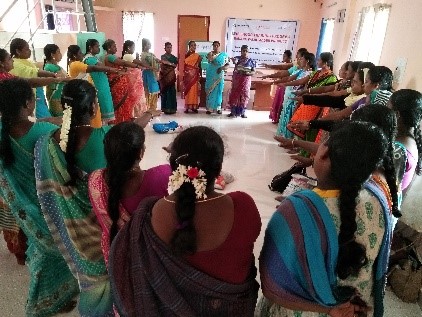
Where are all the girls going?
Author: Deepanwita De
According to World Economic Forum Global Gender Index 2022, India ranks 135 out of 145 countries, which reflects a significant gender disparity across multiple fronts such as political representation, economic empowerment, etc. However, on the Education front India has scored first position on Enrolment in Primary and Tertiary Education. Over the last 70 years, India has made significant progress in attaining literacy, and bridging the education gender divide, through campaigns, progressive policies, burgeoning middle class, and a cultural shift. Since the first census, the literacy rate for females has gone from 8.9 per cent in 1951 to 65.8 per cent in 2018.
While the progress is significant in many ways, India’s ranking in enrolment in secondary education and overall literacy rate, paints a grim picture. While working on the overlappings issues of gender and education along with multiple grassroot organisations, we have realised that the situation is much more complex. The impact of enrolment illustrates just the tip of the iceberg, while the landscape of education is fret with socio cultural dichotomies.
What is latent is the question of access, economic return, capability poverty, etc. Indian government itself recognised that while Right to Education Act and Sarva Shiksha Abhiyan has led to mass enrolment; retention has been a bottleneck. The problem of retention, and stalling of drop-outs has been particularly visible in terms of retention of girls, as it is multi-faceted, and stems from the patriarchal mindset engrained in the Indian society. According to Unified District Information System for Education (UDISE) Plus 2021-22 report the drop out rate of girls were higher than boys in the last 3 years, for primary and upper primary level.
The larger question therefore is, where are all the girls going?
While the answer might be easy to predict, it is one of the most challenging interventions to deal with. The undercurrent of disparity, visible in education, manifests in different forms across the life cycle of a female and is deeply engrained in the larger social fabric, giving rise to a vicious cycle of imbalance and inequality leading to dropout.
Early child marriage (According to UNICEF, 27% of women aged 20-24 years were married before the age of 18, and 7% were married before the age of 15. Early marriage, prevalent in rural areas, lack of infrastructure facilities in schools such as toilets, engaging in domestic chores, caregiving for younger siblings and elderly grandparents, agricultural labour, acts as major deterrents for females to be retained in school.
This is in stark distinction to what other research says on investing on girls education. According to the study by Plan International and financial services firm Citi’s Global Insights team, every $1 spent on girls’ rights and education would generate a $2.80 return – equivalent to billions of dollars in extra GDP.
Against this background, grassroot civil society organisations, along with government driven mass media campaigns, and strong policies can drive the shift towards a more inclusive and equitable education in India, keeping in mind the cross-cutting role of gender. Approaches such as increasing access to quality education, investing in infrastructure, promoting social and cultural change, and empowering girls and women through education can bring an exponential change.
Programs that provide financial support through scholarship schemes, and peer-group support have also shown promise in increasing girls enrolment and retention. Additionally, bridge programmes, STEM education, access to libraries and experiential learning programmes have also exhibited potential participation both among families and girl child.
As much a gravitas is needed for providing education to girls, a higher impetus is needed on interventions with communities and drivers such as parents, guardians, teachers to increase the uptake of education and retain it. There are enough reports that suggest that community engagement models have better outcomes and impact.
As we begin to come out of the pandemic, which has been a fragility multiplier particularly affecting women and girls, the next few years are crucial to rebuild our society on the principles of equity more than equality. With an exploding young population, technology and innovation, rise of the gig economy, no gender can be left out.











.png)

.png)

